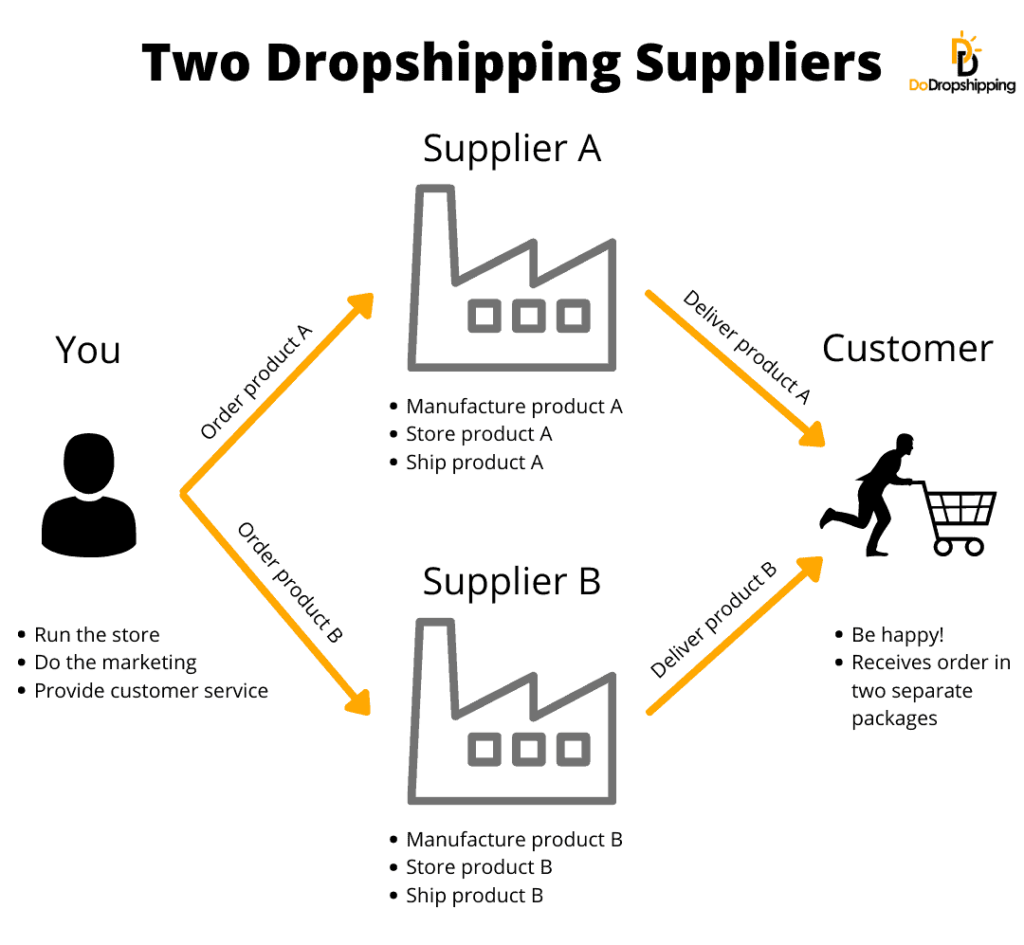
Tips For Running Multiple Dropshipping Stores
Dropshipping has emerged as a popular business model among entrepreneurs looking to dive into e-commerce with minimal capital. It’s a straightforward concept: you sell products on your online store, and once a customer makes a purchase, a third-party supplier ships the item directly to the customer. You don’t have to handle the product yourself. Sounds simple enough, right? But what if you decide to scale your business by managing not just one, but several dropshipping stores? Well, as your online empire grows, so does the complexity of your operations. In this article, we’ll share some essential tips to help you successfully manage multiple dropshipping stores.
Stay Organized and Systematic
Organization is key in any business venture, but when you’re juggling multiple stores, it becomes paramount. Create a system where you can monitor all your stores at a glance. This might involve using project management tools, spreadsheets, or specialized software designed for dropshipping businesses. These tools can help you keep track of inventory, orders, and customer communication across all your platforms.
Automate Where Possible
Time is of the essence, and automation is your best friend. Look for opportunities to automate repetitive tasks. For example, use auto-responders for customer emails, chatbots for customer service queries, and automatic order processing tools that can place orders with your suppliers without your intervention. The more processes you can automate, the more time you’ll free up to focus on growth and strategy.
Standardize Operations and Branding
Uniformity across your stores can significantly streamline your workload. Implement standardized procedures for tasks such as order processing, customer service responses, and product listings. Consistent branding is also crucial, as it helps in fostering trust with your customer base. Even if your stores cater to different niches, maintaining a consistent tone and aesthetic in branding elements like logos, color schemes, and your overall message contributes to a professional image.
Select Your Niches Wisely
When running multiple dropshipping stores, you need to choose your niches with care. Diversify your offerings but avoid spreading yourself too thin. The goal is to select niche markets that are distinct enough to minimize direct competition between your stores but have operational similarities to streamline management.
Focus on Quality Customer Service
Every customer counts, and providing excellent customer service is imperative. An unhappy customer can choose not to only leave one, but all of your stores behind. Set up a centralized customer service system, if possible, that can address issues from all your stores efficiently. Prompt responses and effective problem-solving will keep customers coming back.
Optimize Each Store for Success
Don’t just duplicate your efforts across all stores; optimize each one based on its performance data and customer feedback. Pay attention to the specifics of each market you’re catering to, and tailor your approach accordingly. Data analytics tools can track the performance of each store and offer insights on what to adjust for improved success.
Keep Your Finances In Check
With multiple income streams, it’s essential to keep an eye on the financial health of each store. Use accounting software to help you track revenue, expenses, and profitability. You need to know which stores are money makers and which might need a new strategy or, in some cases, might be more trouble than they’re worth.
Manage Your Time Effectively
Time management becomes increasingly significant as your business expands. Allocate specific times of the day or week to focus on each store individually. Batch similar tasks together to complete them more quickly and efficiently. And importantly, know when to delegate. You don’t have to do everything yourself; hiring virtual assistants or outsourcing certain tasks can be a smart move.
Stay Up to Date With Trends and Technology
E-commerce is always evolving, and so should you. Keep yourself informed about the latest trends, tools, and technologies that could benefit your stores. Attend webinars, join industry groups, and follow influential people in e-commerce to stay ahead of the curve.
Nurture Supplier Relationships
Your suppliers are the backbone of your dropshipping business. Foster good relationships with them, as they may afford you benefits like better pricing, priority processing, or more flexible shipping options, which can give you an edge over the competition. Communicate regularly and clearly with your suppliers to avoid misunderstandings that could affect your customers.
Understand Each Platform’s Rules
If your stores are hosted on various e-commerce platforms, such as Shopify, WooCommerce, or eBay, make sure you understand the different rules and regulations for sellers on each platform. This will help you avoid any infractions that could result in penalties or, worse, suspension of your stores.
Learning and Adapting is Key
Always be open to learning from your experiences. Dropshipping is not a “set it and forget it” business—what works today might not work tomorrow. So, adapt your strategies as needed. Keep experimenting with new ideas, and don’t be afraid to make bold decisions if they have the potential to improve your business.
Take Care of Yourself
Last but not least, take care of your health and well-being. Running multiple stores can be stressful, so it’s essential to find a balance that allows you to rest and rejuvenate. A sharp and rested mind can tackle problems more effectively and come up with creative solutions to enhance your business.
Running multiple dropshipping stores is undoubtedly challenging, but with a strong strategy, a focus on quality, and the willingness to adapt and grow, it can be a rewarding venture. Implement these tips, and you’re on your way to building a thriving online business empire. Good luck!